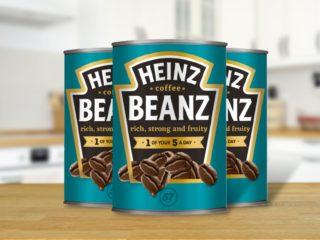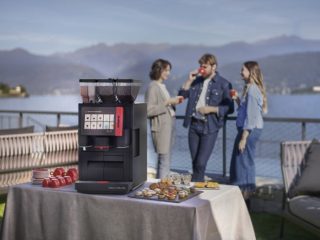How to Up Your Home Brew Coffee Game
Throughout the pandemic there has been an unprecedented shift towards working from home and with that comes the yearning to make great coffee in your own kitchen. We’ve all been accustomed to great coffee at our favourite cafes, but these places usually have expensive espresso machines and water filtration systems that produce consistent high quality beverages, so replicating this at home with pre-ground coffee and a scaled up kettle can be a challenge. In this blog I want to go over some of the ways we can affordably optimize our home brew, to get as close to that cafe experience as possible.
Get exclusive updates from CoffeeCode right in your inbox
Roast Dates
If you’re chasing flavour perfection then you should be resting (not brewing) for at least a few days from the roast date. This is because the coffee releases tiny amounts of carbon dioxide through the valve in the bag. This process of degassing allows the water soluble compounds in the coffee to be much more stable whilst brewing. If brewed within a day or two of roasting you’re likely to see more bubbles than usual and have issues with balance/sourness, as well as inconsistencies from one brew to the next. The upper limit of resting is still up for debate, but good quality coffee often tastes nice a few months after the roast date, if stored properly.
Top tip: If you get a new bag in a week before you’re likely to run out, then you can always have rested coffee ready to go!
Pre-ground
Whilst pre-ground coffee will never be as good as freshly ground coffee, there is something to be said for the uniformity of grind you would get from a coffee shop or roastery grinding your coffee for your specific brew method on a high performance grinder such as an EK43. The disadvantage of this is that the quality of your coffee will degrade faster. If you’re getting pre ground coffee for batch, v60 or aeropress I think you’re likely to experience loss of flavour clarity within a week of grinding, although this rule is by no means definitive and can be subjective.
Top tip: Pre grind for uniformity if you know you will be drinking that coffee sooner rather than later
Home Grinders
Not everyone can justify a home grinder but good quality ones are getting more affordable. They’re not always a necessity but for many, it’s worth treating yourself so you can have more control over your coffee and you can make sure your coffee holds its freshness for weeks more than it otherwise would. The home grinders we found the least effective were the spice grinders which are often used for coffee, where you hold down the grind button, as the uniformity of grind size was particularly bad. Uniformity of grind size is a major consideration in our assessment of grinders, as all those coffee particles will extract at different rates leading to over extraction and under extraction simultaneously.
Hand grinders that look similar to pepper grinders can be the most cost effective way to grind your coffee, a good quality one such as the rhino hand grinder can produce amazingly uniform particles, it’s just whether you can be bothered to manually grind it every morning!
The wilfa svart grinder in our range is very popular among homebrewers as not only is it a reasonable price, it also has different brew methods on the dial. This is the most consistent and convenient for this price range and saves your arm muscles when you have to make coffee for more than yourself. Why not check out our selection here
Top tip: Grind coffee immediately before brewing for best results.
Grind Size
If you do opt for a home grinder, you’ll need to figure out the grind size for your favourite home brew method. Some grinders such as the wilfa range have guidelines on the side as to different methods, but most of the time you are working on knowledge/trial and error. You can often see the wrong grind size before you can taste it, for example; a filter coffee with a fine grind might completely block up or take forever to drain through and an espresso shot might fly out in under 10 seconds if too coarse.
Coffee that is too coarse will have a lighter body, higher unpleasant acidity and lack overall depth. This is caused by water passing through the coffee bed too fast, due to the gaps between larger coffee particles, resulting in less contact time between coffee and water and less extraction.
Coffee that is too fine will cause the water to pass too slowly through the coffee bed and can lead to over extraction if the heat remains high, this will produce bitter and astringent notes, potentially not producing any yield at all, if the coffee is unable to pass through.
Top tip: Follow this flow chart for our guide to extraction.
Incremental Changes / Fixed Variables
When trying to improve your home coffee you should always try to change just one variable at a time and only in small amounts at one time. For example, if you change the grind size you should not change the dose, yield or coffee. If you have the coffee, time and resources to experiment then you can methodically go through all of these variables. If you have rested coffee, brewed at a ratio of 1:16 for filter and maybe 1:2.1 for espresso, then finding the perfect grind size will definitely improve the flavour.
Top tip: One thing at a time.
Water
Water quality is one of the most important considerations for home brewing. In London the water is very hard, with a PPM of around 330. You’ll most likely notice the effect of this from the scale in your kettle, it also carries hundreds of trace elements which can muddy the flavours in your brew. Saying that, most people (including myself) would regularly use tap water at home, although I may buy bottled water if I have family or friends come to stay and I want to make something extra delicious.
The most economical way to elevate the quality of the water at home is with a brita filter, this way you can avoid buying plastic bottles and you only really need to change the cartridge occasionally. BWT’s magnesium enriched filter jugs are very effective, as magnesium also promotes the fruity flavours in the coffee.
Top tip: Use a brita filter and descale your kettle from time to time. Try brewing one with tap water and one with filtered water and taste the difference.
To summarise; Use well rested coffee when you can, experiment with grind size and brew ratios but only change one thing at a time. If you start thinking in this way and making notes of methods that worked particularly well, you’ll be on to a winner.
For specific brew techniques, please refer to our brew guide
This is a guest article by Kieran Lamont from Climpson & Sons

About CoffeeCode
CoffeeCode is the UK’s fastest growing and most exciting coffee website, and has a focus on great coffee, inspirational design and sustainability.
We always do our best to attribute photos, videos and quotes and information to their original sources. Please contact us if an attribution or content is missing or incorrect.




